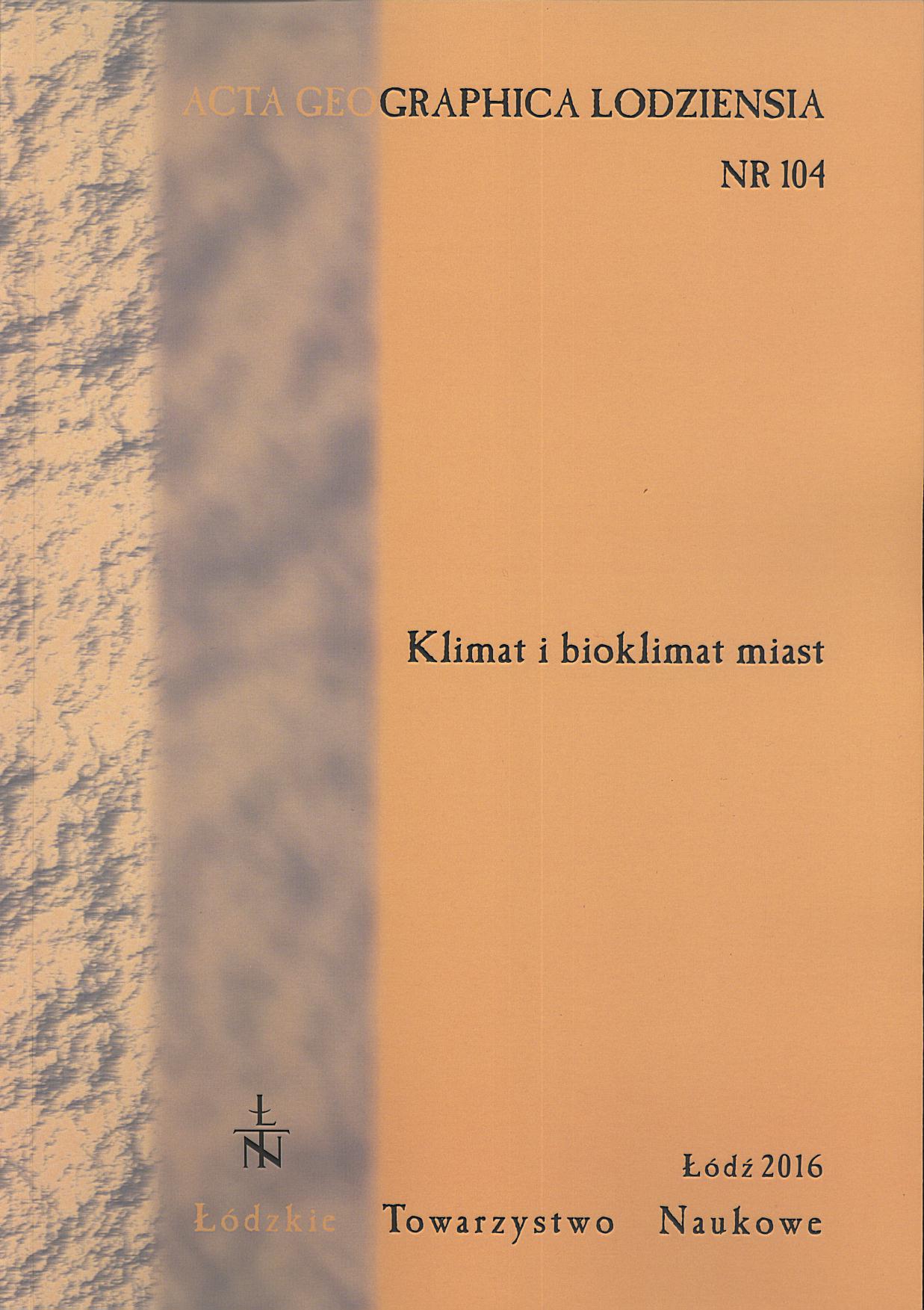Zmienność całkowitego promieniowania słonecznego w Warszawie w latach 1964–2013
Long-term total solar radiation variability in Warszawa within the period 1964–2013)
Author(s): Małgorzata Kleniewska, Bogdan ChojnickiSubject(s): Geography, Regional studies, Environmental Geography
Published by: Łódzkie Towarzystwo Naukowe
Keywords: total solar radiation; Warszawa; urban climate; homogenization; solar trend
Summary/Abstract: The aim of this study was to analyze the total solar radiation (G) variability in the Warszawa agglomeration at different time scales and in the context of globally observed G. The base of the research was long-term data series of daily G sum from the Warszawa-Bielany station in the period 1964–2013. The annual sum of G in Warszawa during the period 1964–2013 ranged from 3217 MJ∙m–2 to 4033 MJ∙m–2 with the mean value of 3672 MJ∙m–2 for the entire analyzed period. There are two opposite, statistically significant trends observed in the analyzedˑ G series and the decrease of total solar radiation (12.7 MJ∙m–2 per year) in the years 1964–1981 and an increase of G from 1984 to 2013 (13.0 MJ∙m–2 per year). The seasonal analysis indicates a permanent increase of spring G values during the whole period, while the rest of the seasons do not show such a clear tendency. As far as the linear trends for seasons are concerned, all the series show significant increases in G during the 1964–2013 period, with the highest absolute rate in spring (54.6 MJ∙m–2 per decade), summer (29.6 MJ∙m–2 per decade), autumn (19.1 MJ∙m–2 per decade) and winter (10.1 MJ∙m–2 per decade). The greatest mean monthly G value in Warszawa during the period 1964–2013 was recorded in July (19 cases), June (17 cases), May (11 cases) and August (3 cases), and the highest mean monthly value for the whole period was found in June (580.0 MJ∙m–2) and in July (579.8 MJ∙m–2). The lowest mean monthly G was observed in December (47.3 MJ∙m–2) and it is only 1.3% of the annual sum of solar energy measured in Warszawa. Daily G values lower that 5 MJ∙m–2 were observed most frequently but the contribution of this value class decreased from 41.3% to the level of 36.4% between the 1970s and the 2000s. Simultaneously, the contribution of G values in the ranges 20.1–25.0 MJ∙m–2 and 25.1–30.0 MJ∙m–2 increased from 9.4 to 11.8% and from 2.9 to 6.1%, respectively. The daily G values higher than 30 MJ∙m–2 were observed after the 1980s.
Journal: Acta Geographica Lodziensia
- Issue Year: 2016
- Issue No: 104
- Page Range: 67-74
- Page Count: 8
- Language: Polish

